| |
|
|
|
|
|
|
|
|
|
|
| |
| |
 |
|
| |
田润德
编译文/图 2020-05-31
20:36 |
|
| |
|
|
|
|
| |
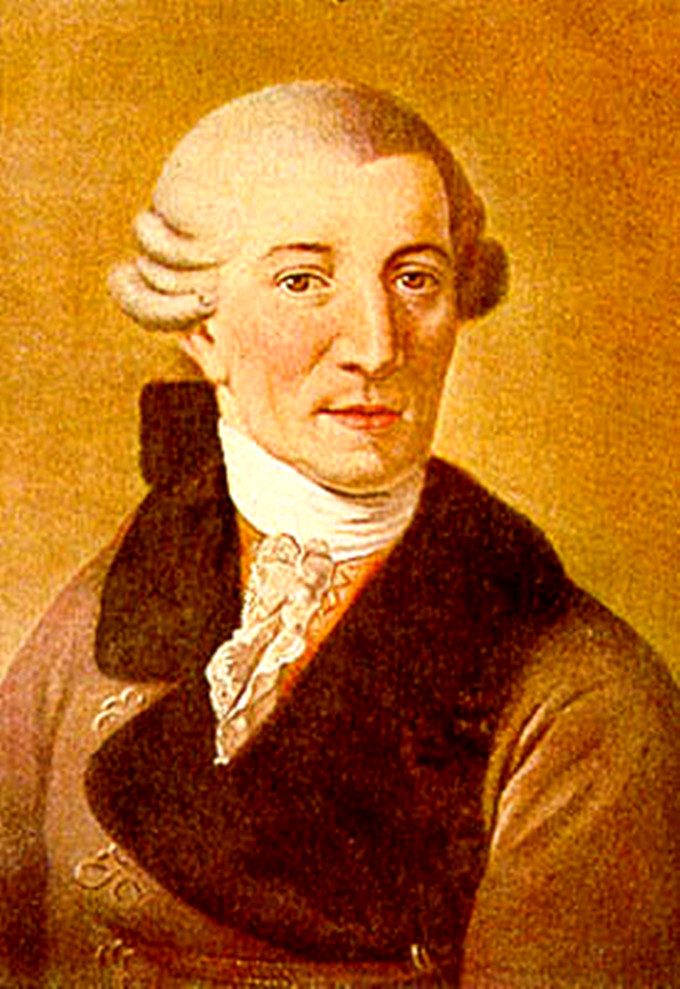 |
|
|
|
| |
约瑟夫·海顿(Franz Joseph Haydn 1732—1809) |
|
|
|
| |
|
|
|
|
| |
利维·普鲁纳鲁演奏海顿C大调第一《小提琴协奏曲》
|
|
|
|
| |
Levy prunaru playing Haydn's violin concerto no. 1 in C
major
|
|
|
|
| |
约瑟夫海顿- C大调第一小提琴协奏曲(Hob)。VIIa
/ 1)
1. 快板中板的(00:33)
2. 慢板11 (55)
3.结局:快板(所)
再来一个:J.S.二巴赫:第二小提琴独奏奏鸣曲中的行板(22:21)
Liviu Prunaru,小提琴和方向
Concertgebouw音乐厅管弦乐
布莱尔·约翰斯顿节目笔记:
令人愉快的C大调小提琴协奏曲,像其他各种海顿的协奏曲一样,只是最近才被重新发现,是为著名的意大利小提琴家路易吉·托马西尼谱写的。这篇文章的确切创作日期不详——它被认为是1769年,但这只是因为它出现在出版商的目录上。不管它是什么时候创作的,它肯定是十八世纪中叶(海顿的或其他的)最吸引人的协奏曲之一。
开场乐章充满活力和庄严,正如人们从C大调调性中所期待的那样,大师级的创作更多地遵循意大利传统,而不是北方的传统——独奏部分有宽广的旋律跳跃、长串的和声序列,以及频繁的琶音。“慢运动”本身已经变得有点出名了,这是理所当然的。它由三个部分组成,开头和结尾部分建立在小提琴部分简单的上升概念上,由重复的伴奏支持,随着独奏达到高潮。乐曲的中心部分充满了甜蜜的抒情,琴弦为小提琴家的沉思提供了柔和的支撑。独奏者有机会在乐章结束前插入一个简短的华彩乐段。大结局,3/8的时间里充满活力的嬉闹,在技术上是相当困难的(对于当时的小提琴家来说是非常麻烦的)。 |
|
|
|
| |
Joseph Haydn - Violin
Concerto No. 1 in C major (Hob. VIIa/1)
1. Allegro moderato (00:33)
2. Adagio (11:55)
3. Finale: Allegro (17:28)
Encore: J.S.Bach - Andante from Sonata for Solo Violin No. 2 (22:21)
Liviu Prunaru, violin & direction
Concertgebouw String Orchestra
Program note by Blair Johnston:
The delightful C major Violin Concerto, like various other Haydn's
concerti only relatively recently rediscovered, was composed for the
well-known Italian violinist Luigi Tommasini. The exact date of
composition is unknown -- it has been ascribed to the year 1769, but
only because it appears in a publisher's catalog for that year. No
matter when it was composed, it is certainly one of the most attractive
concerti (of Haydn's or otherwise) from the middle of the eighteenth
century.
The opening movement is energetic and regal, as one would expect from
its C major tonality, with virtuoso writing more in the Italian
tradition than the northern one -- the solo part has wide melodic leaps,
long strings of harmonic sequences, and frequent arpeggiation. The slow
movement has become somewhat famous on its own, and rightly so. It is
cast in three sections, and the opening and closing sections are built
on a simple rising idea in the violin part, supported by a repetitive
accompaniment which crescendos to a climax along with the soloist. The
central section is sweetly lyrical, with the strings providing gentle
support for the violinist's musings. There is an opportunity for the
soloist to insert a brief cadenza shortly before the close of the
movement. The finale, a lively romp in 3/8 time, is technically quite
difficult (and would have been exceedingly troublesome for violinists of
the day). |
|
|
|
| |
|
|
|
|
| |
音乐历史上的今天
1809年5月31日,午夜过后40分钟,77岁的约瑟夫·海顿在他的誊写员约翰·埃瑟勒和仆人们面前安然去世。这是作曲家海顿的“
第二次死亡”。
1805年巴黎音乐院院长凯鲁宾尼曾专程由巴黎赶到维也纳,看望了年逾七十,获得维也纳荣誉公民称号的海顿。不久,巴黎就得到了一个噩耗:德高望重的老音乐家海顿在编完了他的作品目录之后故世了。
消息一传开,巴黎的音乐界深深为之哀恸,一个隆重的追悼会立即由临时成立的筹委会组织起来,追悼会上还演出了海顿的挚友凯鲁宾尼的作品《神圣大合唱》。
巴黎开追悼会的消息传到维也纳,海顿听了不禁哑然失笑,说可惜没有收到讣告,不然的话他一定要亲自赶去参加追悼会,并且在会上指挥《神圣大合唱》的演出。这是由误传引起的笑话。
今日视频:1、利维·普鲁纳鲁演奏海顿《小提琴协奏曲》。 |
|
|
|
| |
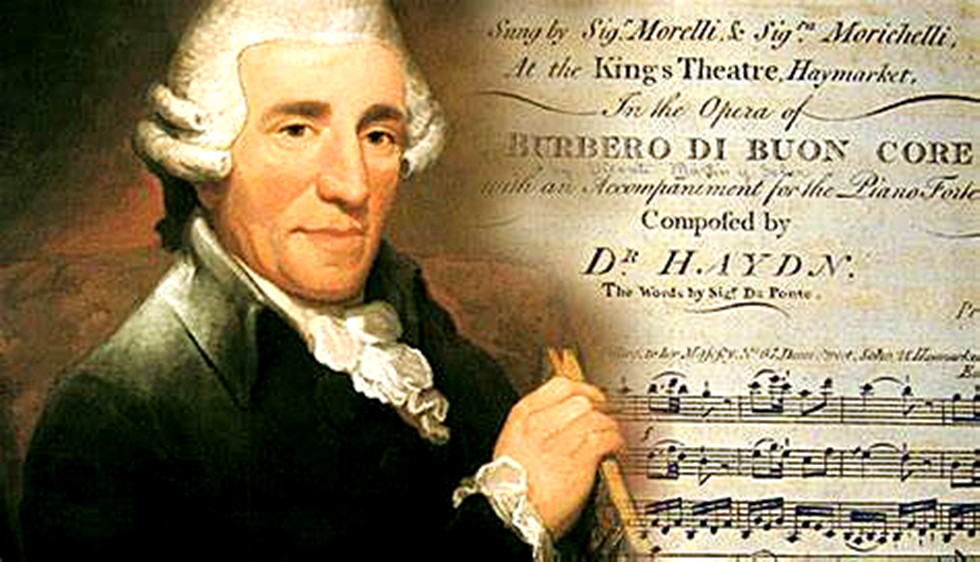 |
|
| |
约瑟夫·海顿(Franz Joseph Haydn) |
|
|
|
| |
弗朗茨·约瑟夫·海顿(Franz Joseph
Haydn,1732年3月31日—1809年5月31日)出生在奥地利南方靠近匈牙利边境的风景秀丽的罗劳村,一个让世界为之瞩目的音乐大师就此诞生了,他就是维也纳古典乐派的奠基人。海顿的父亲是一名轮车匠,他的母亲是位善良的厨娘,尽管生活并不富裕,工作又很辛劳,但这丝毫不能影响他们对音乐的喜爱。父亲在家里总是哼着那些新听来的民间歌曲,这给童年的海顿留下了深刻的印象。
海顿的交响音乐是最欢快的、最轻松的、最愉悦的。然而,一个精神和音乐都是乐观向上的海顿在实际生活中却是个非常孤独的人,他最亲密的朋友是比他年幼24岁的莫扎特。由于童年农村生活的影响,他的创作同多民族的奥地利民间音乐保持着密切的联系。由于海顿天生一副好嗓音,他在8岁时被著名的维也纳圣斯蒂芬教堂唱诗班选中。在这里,他如鱼得水一般刻苦地学习音乐理论与钢琴。随着年龄的增长,从16岁起他甜美的歌喉开始不幸地逐渐沙哑。 |
|
|
|
| |
Franz Joseph Haydn (March 31, 1732 -- May 31, 1809) was
born in the beautiful village of rolau in southern Austria, near the
Hungarian border. He was the founder of the Viennese classical music
school.Haydn's father was a wheelwright, and his mother a kind cook, and
though they were not rich and worked hard, this did not in the least
affect their love of music.Haydn's childhood was impressed by his
father's habit of humming new folk songs at home.
Haydn's symphonic music is the most cheerful, the most
relaxed, the most enjoyable.However, Haydn, who was optimistic in spirit
and music, was a very lonely man in real life. His closest friend was
Mozart, who was 24 years younger than him.Influenced by his childhood
life in the countryside, his works are closely related to the
multi-ethnic Austrian folk music.Because of his natural good voice,
Haydn was chosen at the age of eight by the choir of the famous st.
Stephen's church in Vienna.Here he studied music theory and piano like a
duck to water.As he grew older, from the age of 16, his sweet voice
began to grow unhappily hoarse. |
|
|
|
| |
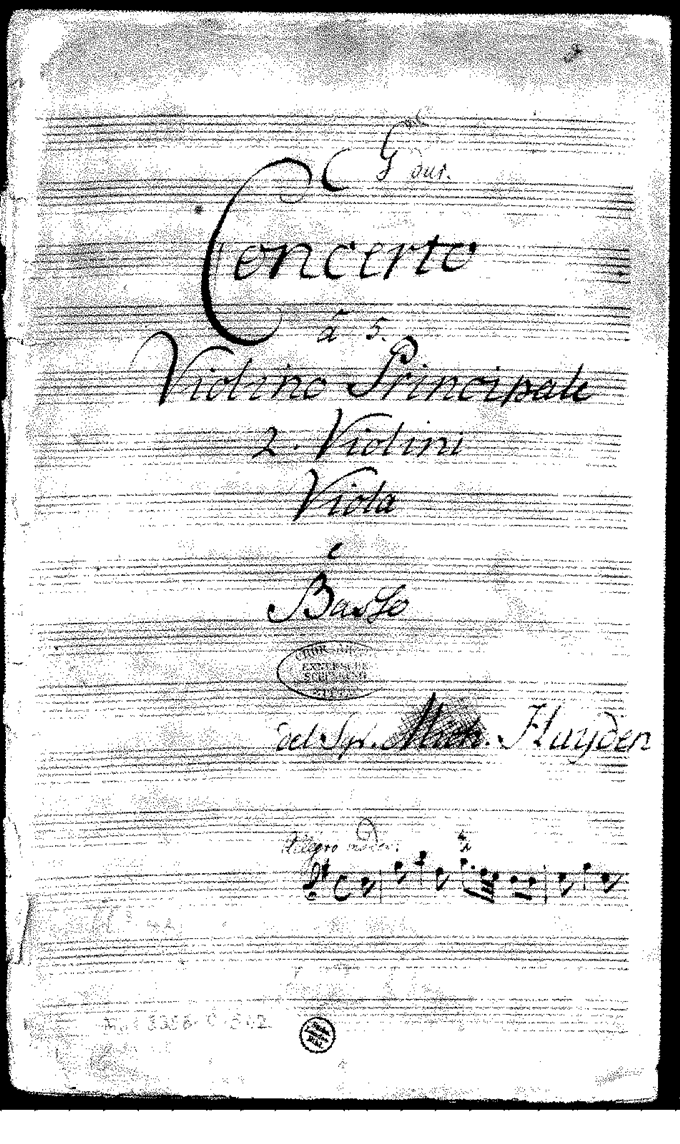 |
|
|
|
| |
海顿C大调第一小提琴协奏曲的手稿封面 |
|
|
|
| |
Today in the
history of music
On May 31, 1809, 40 minutes after midnight, Joseph Haydn, 77, died
peacefully in front of his transcribe, John essler, and his
servants.This is composer Haydn's "second death".
In 1805, the director of the Paris conservatory of music kailbinny had
traveled from Paris to Vienna, visited more than 70 years old, was
awarded honorary citizenship of Vienna.Haydn of the horn.It was not long
before the sad news reached Paris that the venerable musician Haydn had
died after cataloguing his works.
As soon as the news spread, the music world in Paris was in deep
mourning, and a grand memorial service was organized by a temporary
organizing committee.
When the news of the memorial service in Paris reached Vienna, Haydn
could not help but laugh, saying that it was a pity that he had not
received the obituary, otherwise he must go to the memorial service in
person and conduct the performance of the holy chorus at the
meeting.This is a joke caused by misinformation.
Video of the day: 1. Levy prunaru playing Haydn's violin concerto. |
|
|
|
| |
 |
|
|
|
| |
朱利亚诺·卡米诺拉(Giuliano
Carmignola)演奏海顿小提琴协奏曲的唱片封面 |
|
|
|
| |
 |
|
| |
海顿在维也纳的家 |
|
|
|
| |
海顿生命的最后几年是在维也纳这个家度过的。它位于该镇的冈彭多夫区,是他创作著名的oratorios(《创世记》和《四季》)的地方。
当海顿教授贝多芬时,他是欧洲最受尊敬的作曲家,他曾希望他的原型有一天能通过承认他曾经是海顿的学生而认识到他们之间的关系。贝多芬显然没有忘记老师的善意批评,没有满足老师的要求。
当海顿批评贝多芬的作品时,他也许是生了老师的气。约翰·苏切特(贝多芬传记作家)给我们讲过这样一个故事:
1795年8月,贝多芬和刚从伦敦回来的海顿作为贵宾,在利奇诺维斯基亲王的沙龙上演奏了他新创作的三首钢琴三重奏作品1。
63岁的海顿很累。去伦敦的旅行使他精疲力竭,他还要完成一项繁重的任务。在表演中,三个三重奏组成了一个半小时以上的音乐。第三个也是最后一个三重唱结束时,海顿已经非常疲惫了。
贝多芬急忙跑到老师那里,问他有什么想法。海顿冒失地提出,第三个三人组在出版之前需要更多的工作。
贝多芬吓坏了——他永远不会忘记海顿的批评。(具有讽刺意味的是,今天的音乐学家将第三部评为三部中最好的!)这两者之间没有争吵,但贝多芬总是很快地批评他的老老师。他曾经说过,“我从来没有从海顿那里学到任何东西。”
当贝多芬把他的下一首作品——三首钢琴奏鸣曲的组曲,作品2献给海顿时,关系并没有因为钢琴三重奏事件而变得过于紧张。
但是贝多芬从来没有答应海顿向他提出的一个要求,海顿知道这个要求会永远把他和他那聪明而早熟的学生联系在一起:把一首曲子放在最前面……作者路德维希·范·贝多芬,海顿的学生。(贝多芬传记作家苏歇。j
.) |
|
|
|
| |
Haydn's
Home in Vienna
Haydn spent the last years of his life in Vienna, in this home.
Located in the Gumpendorf section of town, it was the place
where he wrote his famous oratorios ("The Creation" and "The
Seasons").
Haydn, the most-respected composer in Europe when he taught
Beethoven, had hoped his protogé would one day recognize their
relationship by acknowledging he had once been Haydn's pupil.
Beethoven, apparently never forgetting his teacher's
well-intentioned criticisms, did not fulfil that request.
Perhaps Beethoven had been annoyed with his teacher when Haydn
expressed criticism of his work. John Suchet (Beethoven
biographer) tells us about one suchincident:
In August 1795, Beethoven performed his newly composed three
Piano Trios opus 1 in the salon of Prince Lichnowsky, with Haydn
- who had just returned from London - as guest of honour.
Haydn - 63 years of age - was tired. The trip to London had been
exhausting, and he had a gruelling commission to fulfil. The
three Trios, in performance, comprise more than an hour and a
half of music. By the end of the third and final Trio, Haydn was
seriously tired.
Beethoven hurried over to his teacher and asked him what he
thought. Haydn had the temerity to suggest that the third Trio
needed more work on it before it was published.
Beethoven was horrified - and he never forgot Haydn's criticism.
(Ironically musicologists today rate the Third as the best of
the three!) There was no falling-out between the two, but
Beethoven was always quick to criticise his old teacher. He once
said, "I never learned anything from Haydn."
Proof that relations were not too strained by the Piano Trio
incident came when Beethoven dedicated his next opus - the set
of three Piano Sonatas, opus 2 - to Haydn.
But Beethoven never acceded to the one request Haydn made of
him, which - Haydn knew - would forever tie him to his brilliant
and precocious pupil: to put at the top of a single composition
..... by Ludwig van Beethoven, pupil of Haydn. (John Suchet,
Beethoven biographer.) |
|
|
|
| |
|
|
|
|
| |
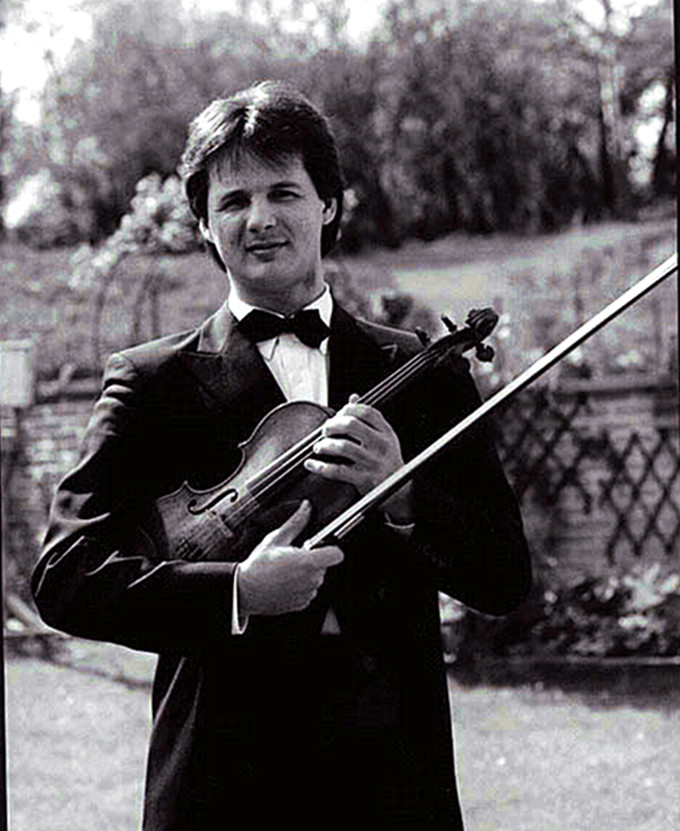 |
|
|
|
| |
利维·普鲁纳鲁(Liviu
Prunaru) |
|
|
|
| |
利维·普鲁纳鲁和阿尔贝托·莱西一起在瑞士Gstaad的Menuhin音乐学院学习,和多萝西·迪蕾一起在纽约学习。2006年9月,他被任命为第一小提琴家。2010年至2012年,他还担任梅纽因音乐学院的艺术总监。
1993年,他赢得了国际大奖赛尤金·伊萨伊,观众奖和伊丽莎白女王国际音乐比赛二等奖。1999年,他赢得了茱莉亚·门德尔松的比赛,并在纽约林肯中心与茱莉亚交响乐团进行了个人首演。从那时起,普拉纳鲁就开始与皇家爱乐乐团和伦敦交响乐团合作进行独奏演出。此外,他还在世界各地举办过独唱会。
利维·普鲁纳鲁在2008年5月的一场圣桑第三小提琴协奏曲演出中首次以独奏身份亮相。他作为一个独奏者返回在2012年12月德沃夏克Dvořak小提琴协奏曲和皮亚佐拉布宜诺斯艾利斯2014年6月的四季。
利维·普鲁纳鲁在1694年被本特姆·范·斯蒂廷研究所(eigendom van Stichting Instituut Gak)的van
Stradivari所描述为“Paschoud”。他在bruikleen heeft gegeven最成功地演奏了一首协奏曲"
利维·普鲁纳鲁演奏使用的是1694年的斯特拉迪瓦里的“帕肖德”Stradivarius“Paschoud”,属于Stichting
Instituut Gak。这把小提琴借给了stichting Concertgebouworkest。
|
|
|
|
| |
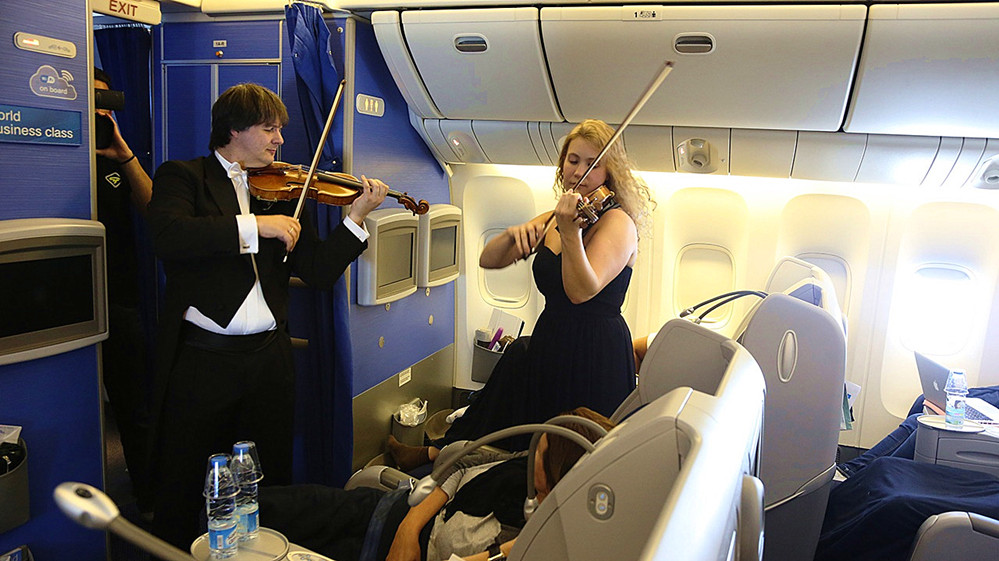 |
|
| |
利维·普鲁纳鲁(Liviu
Prunaru) |
|
|
|
| |
Liviu Prunaru
studied with Alberto Lysy at the Menuhin Music Academy in Gstaad,
Switzerland and with Dorothy DeLay in New York. He was appointed
principal violinist of the Concertgebouworkest in September 2006.
Between 2010 and 2012 he was also Artistic Director of the Menuhin Music
Academy.
In 1993, he won the Prix International Eugène Ysaÿe, the Audience Prize
and second prize at the Queen Elisabeth International Music Competition.
Winning the Juilliard Mendelssohn Competition in 1999 led to his New
York solo debut at Lincoln Center with the Juilliard Symphony. Prunaru
has since given solo performances with the Royal Philharmonic Orchestra
and the London Symphony Orchestra. In addition, he has given recitals
throughout the world.
Liviu Prunaru made his first solo appearance with the
Concertgebouworkest in May 2008 in a performance of Saint-Saëns’s Violin
Concerto No. 3. He returned as a soloist in the Dvořák Violin Concerto
in December 2012 and in Piazzolla's Four Seasons of Buenos Aires in June
2014.
Liviu Prunaru bespeelt de “Paschoud” van Stradivari uit 1694, eigendom
van Stichting Instituut Gak. Deze stichting heeft de viool aan Stichting
Concertgebouworkest in bruikleen heeft gegeven “
Prunaru plays the Stradivarius 'Paschoud' from 1694, owned by the
Stichting Instituut Gak. This stichting (foundation) gave the violin on
loan to Stichting Concertgebouworkest. |
|
|
|
| |
|
|
|
|
| |
|
|
|
|
| |
未得原作者编者授权严禁转载www.mt77.com任何内容 |
|
|
|
|
|
|
|
|
|
|
|
|
|
|


